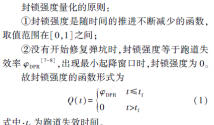Footage of PLA Rocket Force launch DF-21A MRBM. The DF-21A was operational by 1996 and has improved accuracy with an estimated CEP of 100~300 m. This version is reported to have a similar 1,770+ km range, with a potential extended range of 2,150 km (1,340 mi).
You are using an out of date browser. It may not display this or other websites correctly.
You should upgrade or use an alternative browser.
You should upgrade or use an alternative browser.
China IRBM/SRBM (and non-ICBM/SLBM) thread
- Thread starter Blitzo
- Start date
For anyone who is interested, the paper is called 固体弹道导弹大气层外弹道飞行时间控制方法. It's content can be found hereThe latest literature should be DF27
Clearly, it is a Level 3 ballistic missile
However, the speed increment provided by the first three levels is approximately 6500-6800m/s (the speed increment in the literature is divided by direction), and the re-entry altitude is 70km. At this point, the weight of the warhead is 2000kg and there is still 800kg of fuel, indicating that there is still fuel inside the warhead, which is basically liquid power. The PBV of traditional third stage ballistic missiles generally does not have so much fuel.
The speed increment provided by the first three stages is a bit smaller than that of traditional third stage ballistic missiles (usually 7200-7500m/s for the third stage of ballistic missiles). Considering the missile height and speed, it is generally certain that the DV provided by the first two stages is between 5000-6000m/s (medium range ballistic missiles), while the third stage is a liquid stage with multiple ignition, where the first ignition consumes 500-1000kg of fuel, 800kg of fuel has also been retained for ballistic missile re-entry maneuvers.
Note that the mass of this warhead during re-entry is 2000kg, with fuel of 800kg, which is approximately 1200kg of dry mass of the warhead. This weight is in line with the weight characteristics of hypersonic glider vehicles.
So based on the previous figure, it can be seen that DF26 (with a launch weight of 18-24 tons, which is unclear) itself is a nuclear warhead with tens of thousands of kilometers of equipment, while conventional warheads only have 5000km (Level 3 without fuel) -8000km (glide extended range).
View attachment 118164View attachment 118165View attachment 118166View attachment 118167View attachment 118168
You missunderstood the paper. See the Indroduction section, here I quote:
因此,本文针对大气层外弹道导弹时间协同需求,开展大气层外固体发动机耗尽关机的弹道飞行时间控制方法研究。首先,针对弹道导弹末级采用无推力终止的固体发动机,考虑推力大小无法调节与被动关机的特点,设计导弹增速方向交替变换规律,实现固体发动机能量管理。然后,推导能量管理对终端状态造成耦合影响的解析式,设计耗尽关机的制导律,对能量管理造成的耦合影响进行了修正补偿,使各导弹发动机关机时刻速度矢量与位置矢量达到满足飞行时间约束与位置约束的零控状态。最后,进行了不同制导算法对比验证以及同地/异地同时/不同时发射情况下的多弹时间协同仿真验证。
1 耗尽关机制导问题描述
弹道导弹时间协同作战的核心问题是导弹弹道的飞行时间控制,而约束大气层外飞行时间需要在三级闭路制导阶段实现。由于大气层外没有气动力的影响,导弹在三级发动机关机后就进入了无动力的惯性滑行阶段,因此需要使发动机关机时刻的速度矢量与位置矢量达到满足飞行时间约束与位置约束的零控状态,才能实现大气层外飞行时间控制。由于固体弹道导弹采用耗尽关机这种模式,其发动机产生的总视速度模量是一定的,因此为了满足导弹飞行弹道的位置约束与时间约束,需要通过能量管理算法产生附加姿态变化去消耗多余能量。然而,能量管理过程中的附加姿态变化会对终端状态造成耦合影响,导致交班点时间与位置状态偏差较大。典型弹道导弹飞行弹道示意如图1所示It is clearly stated that the missile in study has three stages, and the missile (warhead) is unpowered after 3rd stage shutdown. See figure 1 of the paper. The warhead is unpowered in the path in yellow after 3rd stage shutdown, it travels in a ballistic arch before re-entry then maneuver to the target. The final maneuver is unpowered and is characteristic of many quasi-ballistic missiles.
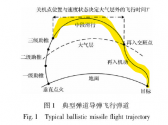
Alough I am puzzled by the figure 2 where the initial mass of missile is merely 2000kg, it is certainly not warhead weighing 2000kg as you suggested.
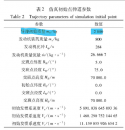
So no, it is definetly not about DF-27, it is probably not any of PLA's operational missile but a study of general control algroritm for sychronized ballistic missile attack.
Title:
基于 SEA 的常规导弹封锁机场跑道作战效能分析与应用
Operational Effectiveness Analysis and Application of Conventional Missile Blocking Airport Runway Based on System Effectiveness Analysis
The journal discusses the methods of blocking airport runway by using cluster munition, written by 623 Brigade who operates cruise missile CJ-10 right now.
Key takeaway
1.The author concludes that a mixture of 8 light cluster munition and 5 medium ones is the most efficient way in his proposals.
It blocks the runway for 12 hours.
2. It cost 15 million RMB (2.5 million USD) for such cruise missile with cluster munition.
3. The most efficient plan is to launch missiles in 3 waves, in an order of 5, 5, 3 missiles with an interval of 10 mins each wave.
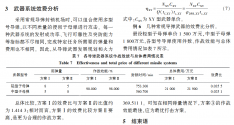
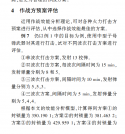
In a real life situation they would need to account for enemy air defenses intercepting some of the missiles and compensate by allocating extra fires to achieve desired effect, which would consequently raise the costs depending on how well defended target runway is.
Title:
基于 SEA 的常规导弹封锁机场跑道作战效能分析与应用
Operational Effectiveness Analysis and Application of Conventional Missile Blocking Airport Runway Based on System Effectiveness Analysis
The journal discusses the methods of blocking airport runway by using cluster munition, written by 623 Brigade who operates cruise missile CJ-10 right now.
Key takeaway
1.The author concludes that a mixture of 8 light cluster munition and 5 medium ones is the most efficient way in his proposals.
It blocks the runway for 12 hours.
2. It cost 15 million RMB (2.5 million USD) for such cruise missile with cluster munition.
3. The most efficient plan is to launch missiles in 3 waves, in an order of 5, 5, 3 missiles with an interval of 10 mins each wave.
View attachment 120268View attachment 120269
This study only investigates the flight state of the third stage rocket.For anyone who is interested, the paper is called 固体弹道导弹大气层外弹道飞行时间控制方法. It's content can be found here
You missunderstood the paper. See the Indroduction section, here I quote:
因此,本文针对大气层外弹道导弹时间协同需求,开展大气层外固体发动机耗尽关机的弹道飞行时间控制方法研究。首先,针对弹道导弹末级采用无推力终止的固体发动机,考虑推力大小无法调节与被动关机的特点,设计导弹增速方向交替变换规律,实现固体发动机能量管理。然后,推导能量管理对终端状态造成耦合影响的解析式,设计耗尽关机的制导律,对能量管理造成的耦合影响进行了修正补偿,使各导弹发动机关机时刻速度矢量与位置矢量达到满足飞行时间约束与位置约束的零控状态。最后,进行了不同制导算法对比验证以及同地/异地同时/不同时发射情况下的多弹时间协同仿真验证。
1 耗尽关机制导问题描述
弹道导弹时间协同作战的核心问题是导弹弹道的飞行时间控制,而约束大气层外飞行时间需要在三级闭路制导阶段实现。由于大气层外没有气动力的影响,导弹在三级发动机关机后就进入了无动力的惯性滑行阶段,因此需要使发动机关机时刻的速度矢量与位置矢量达到满足飞行时间约束与位置约束的零控状态,才能实现大气层外飞行时间控制。由于固体弹道导弹采用耗尽关机这种模式,其发动机产生的总视速度模量是一定的,因此为了满足导弹飞行弹道的位置约束与时间约束,需要通过能量管理算法产生附加姿态变化去消耗多余能量。然而,能量管理过程中的附加姿态变化会对终端状态造成耦合影响,导致交班点时间与位置状态偏差较大。典型弹道导弹飞行弹道示意如图1所示
It is clearly stated that the missile in study has three stages, and the missile (warhead) is unpowered after 3rd stage shutdown. See figure 1 of the paper. The warhead is unpowered in the path in yellow after 3rd stage shutdown, it travels in a ballistic arch before re-entry then maneuver to the target. The final maneuver is unpowered and is characteristic of many quasi-ballistic missiles.
View attachment 120254
Alough I am puzzled by the figure 2 where the initial mass of missile is merely 2000kg, it is certainly not warhead weighing 2000kg as you suggested.
View attachment 120253
So no, it is definetly not about DF-27, it is probably not any of PLA's operational missile but a study of general control algroritm for sychronized ballistic missile attack.
So the 2000kg of m0 is the mass of the third stage rocket.
Have you ever seen a three stage rocket with only 2000kg?
I have been researching the DF21 series missile warheads for over 20 years.
DF2x's 2 refers to a two-stage rocket, where do you think the third stage rocket came from.
The third stage is the warhead, and adding more fuel to the warhead is the third stage of the rocket.
It's just that this third pole and warhead are not designed separately. The separation design becomes a Midgetman missile.
The third stage is the warhead, and adding more fuel to the warhead is the third stage of the rocket.
It's just that this third pole and warhead are not designed separately. The separation design becomes a Midgetman missile.
Don't be too constrained by specific forms.For anyone who is interested, the paper is called 固体弹道导弹大气层外弹道飞行时间控制方法. It's content can be found here
You missunderstood the paper. See the Indroduction section, here I quote:
因此,本文针对大气层外弹道导弹时间协同需求,开展大气层外固体发动机耗尽关机的弹道飞行时间控制方法研究。首先,针对弹道导弹末级采用无推力终止的固体发动机,考虑推力大小无法调节与被动关机的特点,设计导弹增速方向交替变换规律,实现固体发动机能量管理。然后,推导能量管理对终端状态造成耦合影响的解析式,设计耗尽关机的制导律,对能量管理造成的耦合影响进行了修正补偿,使各导弹发动机关机时刻速度矢量与位置矢量达到满足飞行时间约束与位置约束的零控状态。最后,进行了不同制导算法对比验证以及同地/异地同时/不同时发射情况下的多弹时间协同仿真验证。
1 耗尽关机制导问题描述
弹道导弹时间协同作战的核心问题是导弹弹道的飞行时间控制,而约束大气层外飞行时间需要在三级闭路制导阶段实现。由于大气层外没有气动力的影响,导弹在三级发动机关机后就进入了无动力的惯性滑行阶段,因此需要使发动机关机时刻的速度矢量与位置矢量达到满足飞行时间约束与位置约束的零控状态,才能实现大气层外飞行时间控制。由于固体弹道导弹采用耗尽关机这种模式,其发动机产生的总视速度模量是一定的,因此为了满足导弹飞行弹道的位置约束与时间约束,需要通过能量管理算法产生附加姿态变化去消耗多余能量。然而,能量管理过程中的附加姿态变化会对终端状态造成耦合影响,导致交班点时间与位置状态偏差较大。典型弹道导弹飞行弹道示意如图1所示
It is clearly stated that the missile in study has three stages, and the missile (warhead) is unpowered after 3rd stage shutdown. See figure 1 of the paper. The warhead is unpowered in the path in yellow after 3rd stage shutdown, it travels in a ballistic arch before re-entry then maneuver to the target. The final maneuver is unpowered and is characteristic of many quasi-ballistic missiles.
View attachment 120254
Alough I am puzzled by the figure 2 where the initial mass of missile is merely 2000kg, it is certainly not warhead weighing 2000kg as you suggested.
View attachment 120253
So no, it is definetly not about DF-27, it is probably not any of PLA's operational missile but a study of general control algroritm for sychronized ballistic missile attack.
The core is whether the power of the oversized third pole warhead is solid fuel or liquid fuel.
Solid fuels can only be ignited once, while liquid fuels can be ignited once or multiple times.
So what trajectory to fly is just a choice made by the flight computer controller based on the launch command.
You see, the final speed of the handover is almost 7000m/s.
The 2000kg missile is too small to reach a speed of 7000m/s if it is made into a 3-stage rocket, because the relative mass of the shell is too large, and the speed cannot increase at the specific impulse of solid fuel. DF11 has 3.8t. What is the speed of a three stage rocket with a 500kg warhead, an 800kg charge, and a total mass of 2000kg?
So this 2000kg is the total weight of the warhead.
This study only investigates the flight state of the third stage rocket.
No I have never seen an operational 3 stage missile being only 2000kg, therefor I said that I am puzzled by the figure. But very light rocket such as weather rocket can be multiple stages and very light. The author may have made a mistake by missing an zero but what makes you the authority to state that the author actually made such mistake and matches your statement?So the 2000kg of m0 is the mass of the third stage rocket.
Have you ever seen a three stage rocket with only 2000kg?
This is very cheap tactic to scare others out of a debate. Let me present your competence from 20 years researching of DF21:I have been researching the DF21 series missile warheads for over 20 years.
You repeatedly used phrases such as "three levels" in post #81 and "third pole" in post #107.
1. The proper professional term in English is "stage", in Chinese it is 级. It seems that you are not English speaker and made up a Chinglish term "level" from "级“.
2. I am also curious of how and why you switched to the word "pole". Pole in Chinese is 极 as in South Pole (南极), it means the extreme end, it seems that you are neither a native Chinese speaker therefor mixing the two different words, or you skipped your elementery class in China?
3. You switched between "pole" and "level". People with inadequate language skill will stick to the translation that they believe to be right, they will not switch to other word, unless you rely on machine translation which may use different translation due to faulty judgement of context. I know this because I am surrounded by native and non-native English speakers.
Now seriously, are you claiming to be a memeber of DF21' research team? Or you did home research for 20 years with your abysmal knowledge in professional English and Chinese literacy?
I suggest you stop 脑补, inserting your imagination into the mouth of the researcher.Don't be too constrained by specific forms.
Either you have not read the document up to this point of time, or as I suspected, you are not native Chinese speaker and can not read but relying on crappy machine translation, otherwise, you wouldn't even ask such questions and started your wild imagination.The core is whether the power of the oversized third pole warhead is solid fuel or liquid fuel.
Solid fuels can only be ignited once, while liquid fuels can be ignited once or multiple times.
So what trajectory to fly is just a choice made by the flight computer controller based on the launch command.
You see, the final speed of the handover is almost 7000m/s.
The 2000kg missile is too small to reach a speed of 7000m/s if it is made into a 3-stage rocket, because the relative mass of the shell is too large, and the speed cannot increase at the specific impulse of solid fuel. DF11 has 3.8t. What is the speed of a three stage rocket with a 500kg warhead, an 800kg charge, and a total mass of 2000kg?
So this 2000kg is the total weight of the warhead.
Once again, I quote the introduction section of the paper, see the bold texts. Tell me what does it say, or don't bother to reply at all.
因此,本文针对大气层外弹道导弹时间协同需求,开展大气层外固体发动机耗尽关机的弹道飞行时间控制方法研究。首先,针对弹道导弹末级采用无推力终止的固体发动机,考虑推力大小无法调节与被动关机的特点,设计导弹增速方向交替变换规律,实现固体发动机能量管理。然后,推导能量管理对终端状态造成耦合影响的解析式,设计耗尽关机的制导律,对能量管理造成的耦合影响进行了修正补偿,使各导弹发动机关机时刻速度矢量与位置矢量达到满足飞行时间约束与位置约束的零控状态。最后,进行了不同制导算法对比验证以及同地/异地同时/不同时发射情况下的多弹时间协同仿真验证。
All the rest of your argument is based on faulty assumptions and of no value.
Last edited:
The paper already included such parameterIn a real life situation they would need to account for enemy air defenses intercepting some of the missiles and compensate by allocating extra fires to achieve desired effect, which would consequently raise the costs depending on how well defended target runway is.

I find chapter 2, definition of "blocking ratio" is important to understand how the authors studied various schemes. The blocking ratio is a decreasing function of time. It defines how fast the enemy can recover the runway operation. This is why they calculated that some shcemes with multiple waves of bombing is better than less waves, also why different ammunation arrangements have different effect.
Title:
基于 SEA 的常规导弹封锁机场跑道作战效能分析与应用
Operational Effectiveness Analysis and Application of Conventional Missile Blocking Airport Runway Based on System Effectiveness Analysis
The journal discusses the methods of blocking airport runway by using cluster munition, written by 623 Brigade who operates cruise missile CJ-10 right now.
Key takeaway
1.The author concludes that a mixture of 8 light cluster munition and 5 medium ones is the most efficient way in his proposals.
It blocks the runway for 12 hours.
2. It cost 15 million RMB (2.5 million USD) for such cruise missile with cluster munition.
3. The most efficient plan is to launch missiles in 3 waves, in an order of 5, 5, 3 missiles with an interval of 10 mins each wave.
View attachment 120268View attachment 120269
